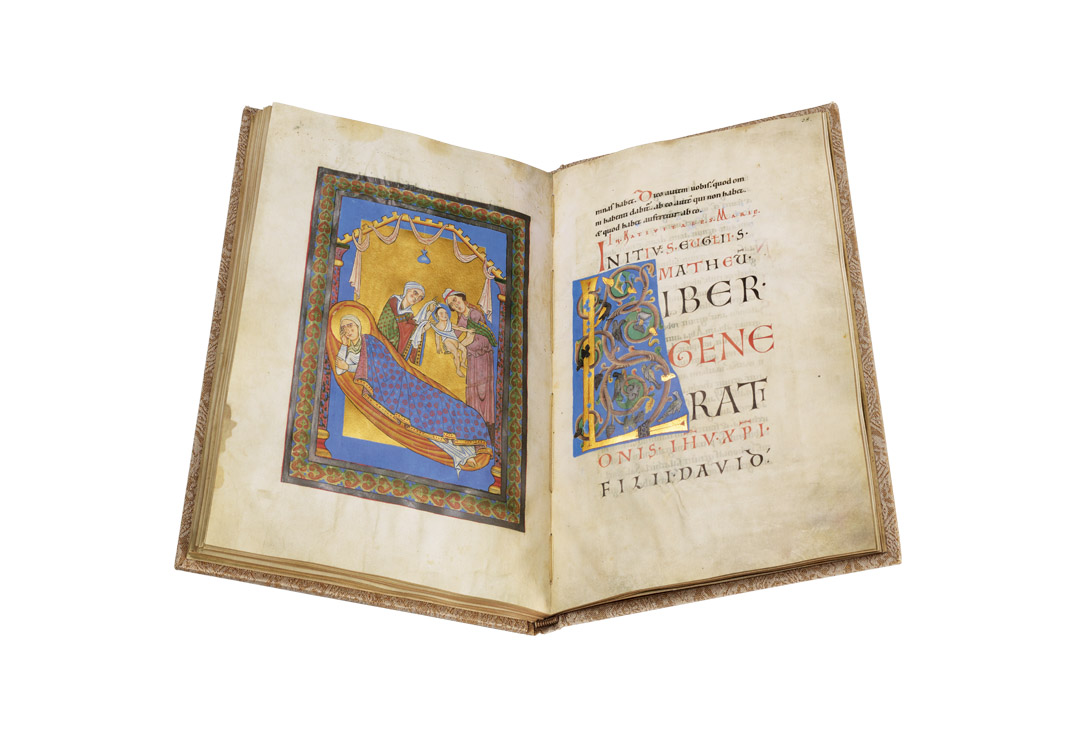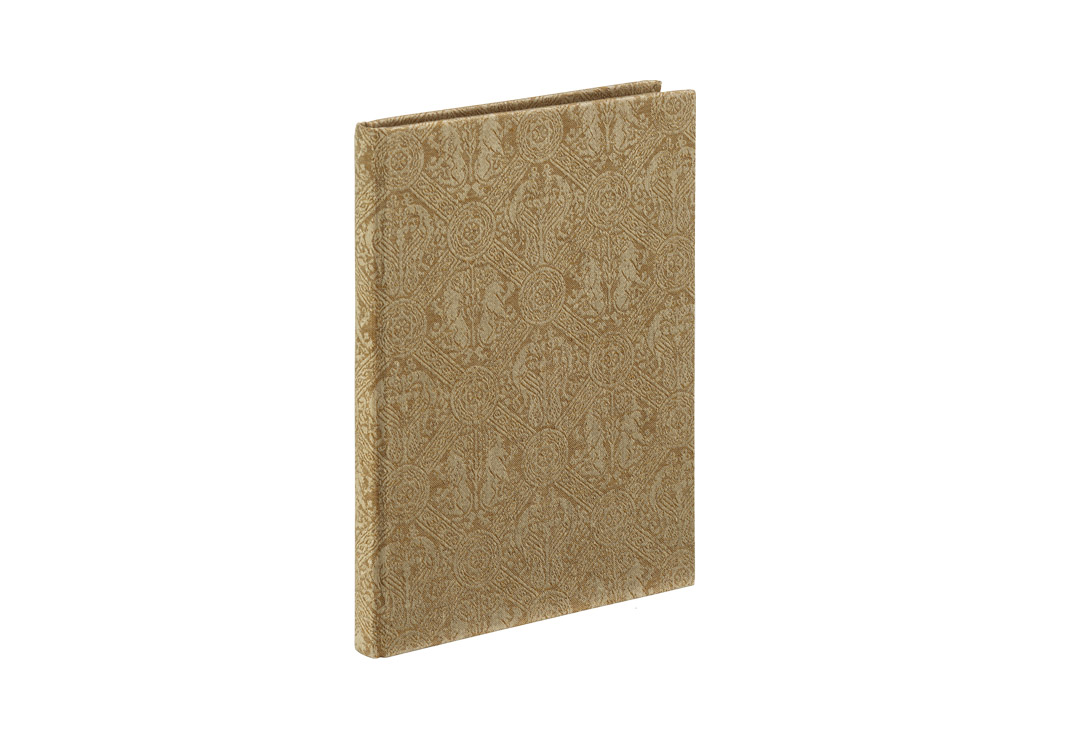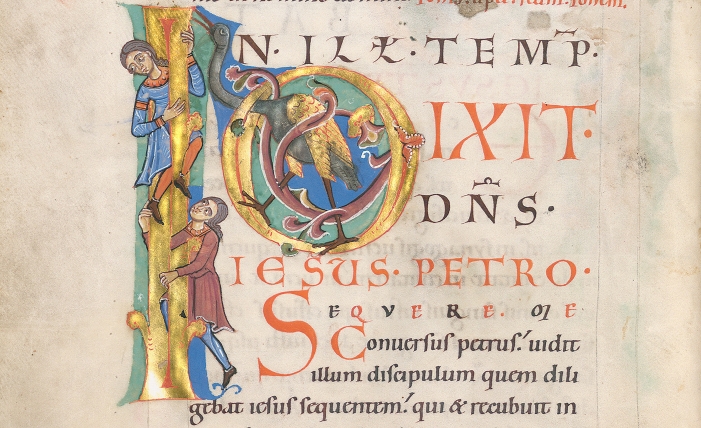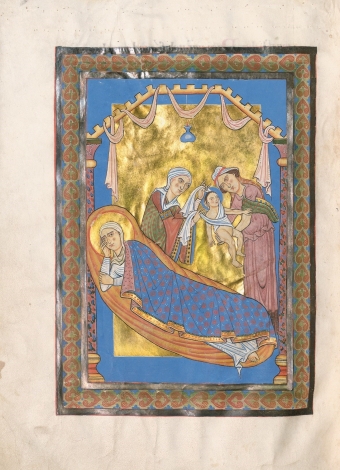The Passau Gospel Lectionary
The Romanesque Art of Manuscript Illumination in Gold and Silver
Manuscript | Lupe | Edition | Browse | Production | Facsimile folder | Request brochure
Passaue Gospel Lectionary
The Passau Gospel Lectionary: The Manuscript
Created by Two Masters
Two book illuminators congenially participated in creating the Passau Gospel Lectionary; with each one working by sections or gatherings, they executed the miniatures and decorated the initials. Named after the subjects of their most prominent miniatures, the painters are called the “Saint Peter Master” and the “Ecclesia Master”. A closer look reveals marked differences in style and details between the two artists, especially in the faces and drapery of the garments, as well as in the design of the initials displaying gold letters on a blue and green background. An extraordinary feature of the manuscript is the use of double initials where in addition to the recurring letter “I” of the introductory formula “In illo tempore”, the first letter of the pericope proper is also executed as a decorated initial.
Radiant Sacred Texts
A Gospel Lectionary contains the readings (pericopes) from the four Gospels used in the Mass, allocated to certain days in the calendar of the Church year. Well into the Late Middle Ages, the Gospel Lectionary remained among the major liturgical books, indispensable for every church, monastery or convent. The Passau Gospel Lectionary is solely dedicated to the principal Christian feasts. Made for use on feast days to glorify the word of God, the Gospel Lectionary was generously adorned with an especially rich and lavish decoration. The miniatures and the initials of the Gospel readings sparkle with gold and silver, thus attesting to the close relationship between Christian worship and elaborate Romanesque book art.
A Unique Testimony
Highly esteemed by kings, princes and clerical institutions, a number of richly decorated manuscripts were written and illuminated during the twelfth century in the thriving diocesan town of Passau. The monastery of the Augustinian Canons of St. Nicola, founded around 1067, was an important center for the production of manuscripts. However, over the centuries this rich tradition was almost completely extinguished by catastrophes such as fires or banishments. Made in St. Nicola around 1180, the Passau Gospel Lectionary is therefore of immense value, as it is one of the few remaining examples that testify to the artistically refined and autonomous art of book illumination in Passau from the Romanesque period.
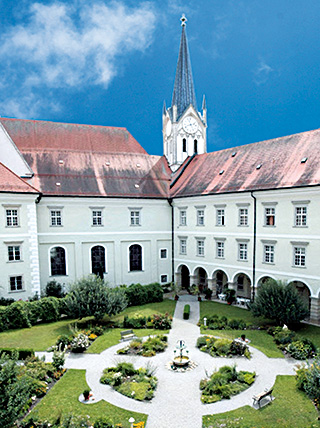
Passauer Gospel Lectionary
Under the Magnifying Glass: Byzantine Influences in Expressive Miniatures
Passau Gospel Lectionary
The Passau Gospel Lectionary: The Edition

The Manuscript and the Facsimile at a Glance
In the Passau Gospel Lectionary, expressive images sparkling with gold and silver come to life with vibrant colours. For the first time, this masterpiece of Romanesque book art is made available as a facsimile edition, thus enabling you to experience directly the splendour of this illuminated book.
Manuscript: Munich, Bayerische Staatsbibliothek, Clm 16002
Date of Origin: c. 1170/1180
Place of Origin: Passau (Monastery of the Augustinian Canons at St. Nicola)
Dimensions: c. 32.5 x 22.5 cm
Extent: 88 pages (44 leaves)
Artists: two masters of book illumination from Passau (Saint Peter Master, Ecclesia Master)
Patron: unknown
Illumination: 8 full-page miniatures, 49 decorated initials, mostly historiated, filled with coloured foliage sprays, silver animals, flowers and figures, extensively applied gold and silver in various nuances
Binding: cloth cover of luxuriously patterned silk fabric modelled after ecclesiastical vestments of the 12th century
Commentary Volume for the Facsimile Edition by Martina Pippal
Print run: 680 copies
Passau Gospel Lectionary
Enjoy Viewing a Few Sample Pages:
A Glance at the Facsimile
The four-page section from the Passau Gospel Lectionary reproduced here shows fols. 9r-12r. This sequence of pages contains three pericopes pertaining to the church feasts in January (Epiphany), February (Candlemas) and March (Annunciation to the Virgin Mary). Gold decorated initials mark the beginning of each passage. Their foliage sprays are inhabited by birds and other animals, and a figure is climbing the scrolls of the P-initial on fol. 11r. The pericope on the Annunciation to the Virgin on fol. 12r starts with a double initial consisting of the letters “I” and “M”. The miniature of fol. 10v depicts the Presentation in the Temple and illustrates the subsequent pericope read at Candlemas.
Passau Gospel Lectionary
A Challenging Production: fac simile
Gold and Silver Coming to Life
The realistic reproduction of gold and silver requires the utmost care and the highest level of perfection by the specialists who produce the facsimile of the Passau Gospel Lectionary. After photographing the original page layout, a lithographer executes separate gold and silver prints and compares the proofs with the original. In separate print runs, gold and silver are later applied to the special hand-finished paper that closely resembles medieval parchment. When the facsimile pages are turned, glittering gold and silver reflect the light and give you an authentic experience of this illumination, which is over 800 years old.
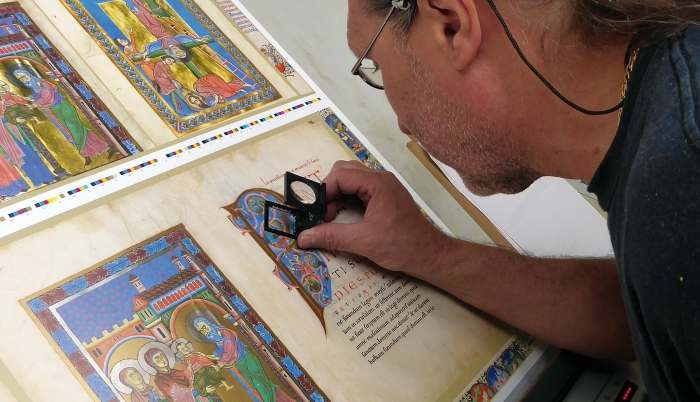
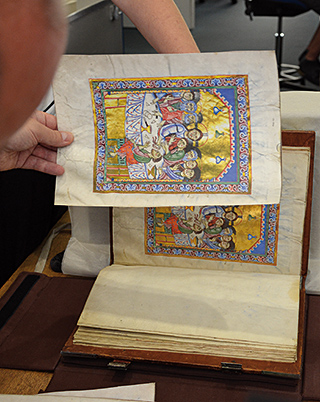
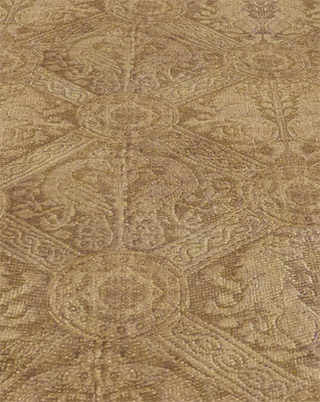
A Treasure Binding for the Facsimile
Dating from a later period, the current binding of the Passau Gospel Lectionary does not match the Romanesque character of the manuscript. Its reproduction for the facsimile was out of the question. In the twelfth century, precious fabrics were often used for book binding. In cooperation with Swiss specialists in textile art, Quaternio Editions Lucerne therefore selected a fabric woven in the Duchy of Bavaria around the same period as when the Passau Gospel Lectionary was created. This softly gleaming silk fabric, sumptuously patterned with pairs of lions and peacocks, was faithfully replicated exclusively for this facsimile.
Passau Gospel Lectionary
The Facsimile Folder for the Edition

Passau Gospel Lectionary




